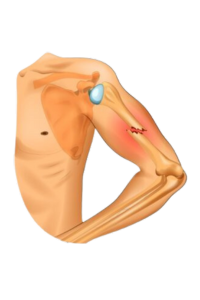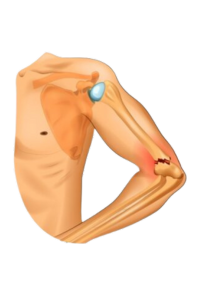The humerus simply refers to the long bone forming the top half of your arm. The top end of the humerus forms the ball part of your ball and socket joint at the shoulder (Glenohumeral joint). Humerus fractures are common and usually the result of a direct blow to the shoulder or a fall onto an outstretched hand. Although the average age of a person with a humerus fracture is over 65 years, it can occur in younger people too; however, they are often associated with significant trauma, for example, a motor cycle accident or a sports related injury.



Most humerus fractures (85%) do not require an operation and the bone will heal in 6 - 12 weeks. You will often have a repeated x-ray within this time to check how the bone is uniting which is conducted and overseen by the orthopaedic team. Although the bone is usually expected to heal in 12 weeks it is still common for individuals to experience some swelling and pain for 6 months or more after the initial injury.
The vast majority of humeral fractures recover in a similar process (see outlined under Management). However, not all patients will recover exactly as outlined and therefore it is crucial to follow the advice your clinicians have provided. It should also be considered that after a humeral fracture, the affected shoulder may never regain its full range of movement, whether treated conservatively or surgically. The aim of your rehabilitation is to try and achieve the most optimal function possible.

